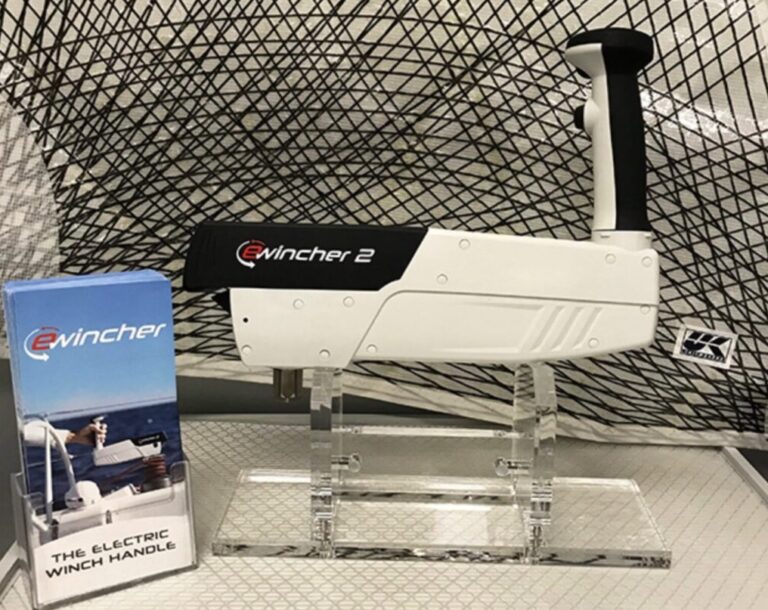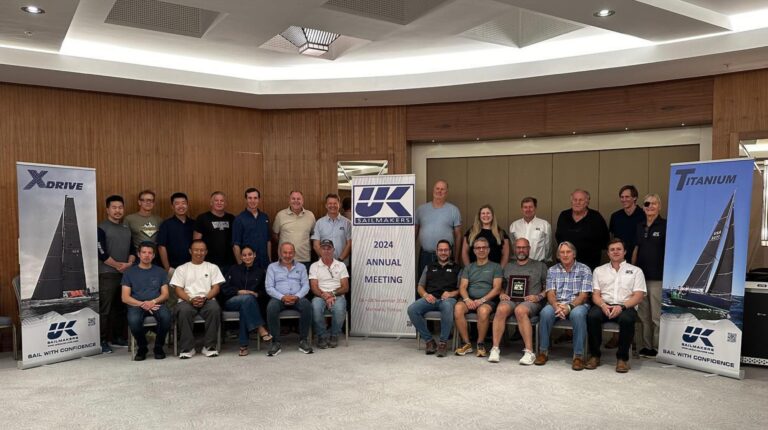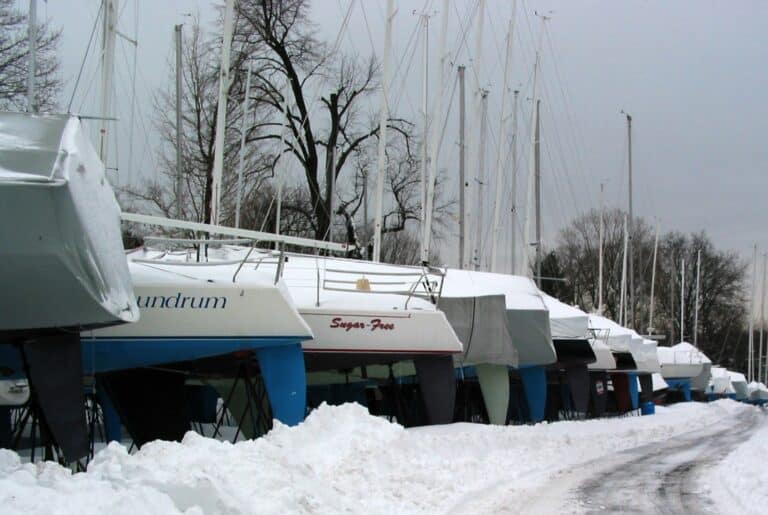Article by Buttons Padin from interviews with Barry Hayes, owner of UK Sailmakers Ireland.
Wear and tear can destroy almost any part of your laminate sail. You pad and tape the lifelines and put chafe guards on. You put covers on spreader tips. All these things protect your sails, but your sails can suffer from abrasion and folding as well. Every time you tack, your sails will flutter, bending threads and slowly breaking down the sailcloth over time. And, if you have an overlapping Genoa, the constant brushing over the mast and shrouds will eventually cause wear on the laminate.
What can you do to protect your sails and extend their performance life? One solution is to purchase sails with a protective coating of a light taffeta on one or both sides of the sail. The taffeta we’re talking about is a durable fabric made from twisted polyester yarns. These panels of taffeta can be laminated to mylar sailcloth when the sailcloth is being manufactured.
Simply put, a protective layer of taffeta will strengthen, protect, and extend the life of a sail. Ranging in thickness from 1.0 mil to 2.0 mil, you can order a sail made with taffeta already bonded to one side (preferred) or you can have UK Sailmakers apply a layer of taffeta to an existing sail. In either case, the value represented by the extended performance life of the sail vs. any cost implications makes taffeta a wise decision.

An additional benefit of adding taffeta is that it helps create a firm, stable, and durable structure when laminated, allowing the sailmaker to reduce the weight of the core mylar or woven film, helping keep the sail as light as possible.
There are two schools of thinking regarding how much taffeta is needed. For sails where you want to dramatically extend peak performance life, full coverage of one side is recommended – ideally using a base sailcloth with integrated taffeta mentioned above. To protect the sail even more, on the film side, you can have a taffeta “wave” applied, a wide strip of taffeta that follows the shape of the sail down the leech and forward across the foot. This taffeta wave adds a layer of protection against abrasion where it is needed most, without adding extra weight and bulk to the entire sail.

That said, many cruising boats going offshore or those sailing in races like the Fastnet opt for full taffeta on both sides of the sail. This makes the sail extremely strong and durable, although it does add to the sail’s overall weight.
The majority of the taffeta that sailmakers use comes from Germany, India, or Taiwan and comes in white, gray, or black. Regardless of color, the taffeta material itself comes in 3 primary weights:
50 x 50 – Light taffeta, Taffeta L, which is about 1 sm-oz when laminated to a film.
50 x 150 – Medium taffeta, Taffeta M, which is about 1.3 sm-oz when laminated to a film.
150 x 150 – Heavy taffeta, Taffeta H, which is about 1.8 sm-oz when laminated to a film.
Approximately 90% of all boats in Ireland with taffeta only need light or medium-weight taffeta; anything more would be too heavy.
An example of taffeta laminated onto mylar is the Radial laminate DCX from Dimension Polyant. This is a very durable lightweight radial laminate used on most cruising and performance cruising boats. And taffeta protective coatings are not just for mains and jibs, today’s Code 0s are made with very light taffeta coatings, too.

One final note, because taffeta will absorb some water, the sail can add weight in certain situations. As such, taffeta-coated sails are not well suited for one-designs like the 1720 or J/70 that are normally better off with quick-dry, lightweight mylar sails. However, if you have a J/80 with a furling headsail, a taffeta headsail would be really good as it would add to the durability of the furling sail.
To learn more about what taffeta coatings can do to extend the peak performance life of the sails on your boat, contact your UK Sailmakers loft today.






